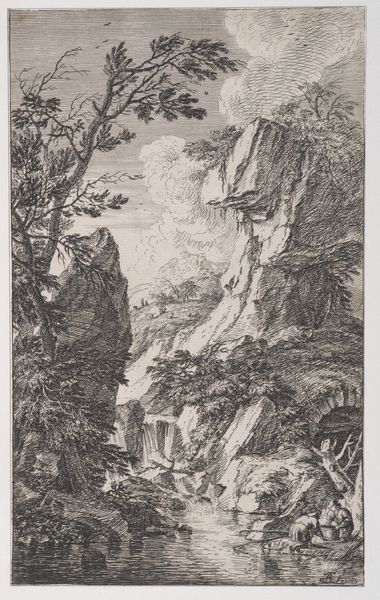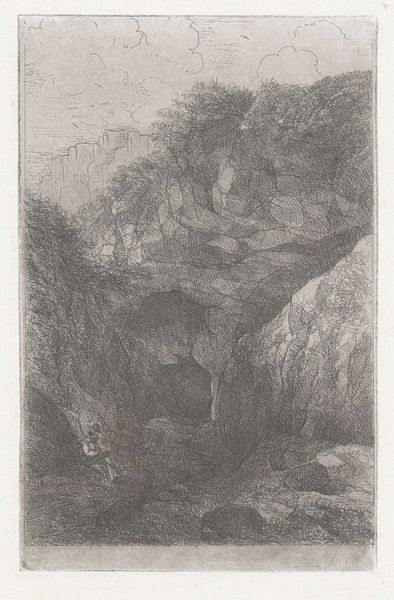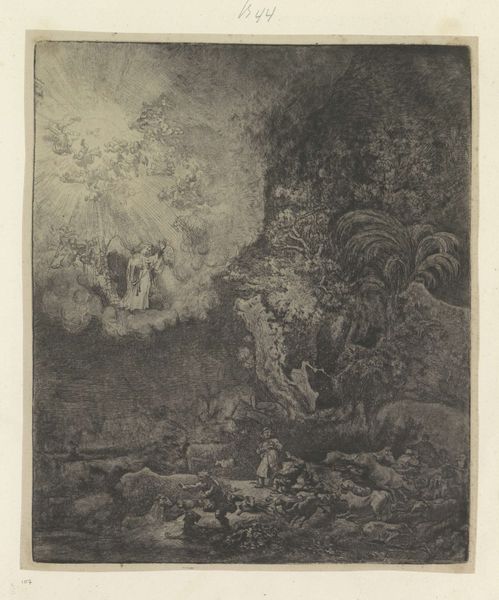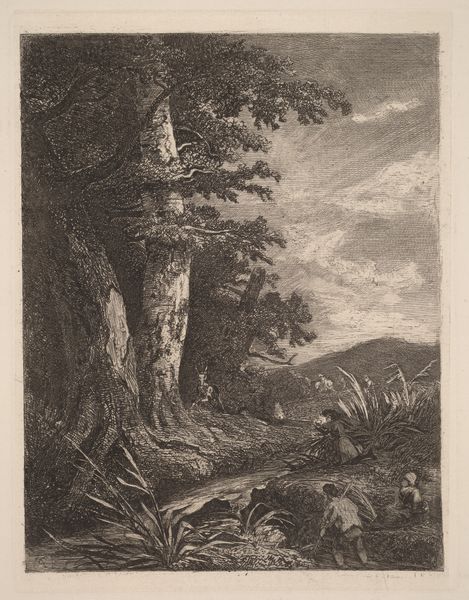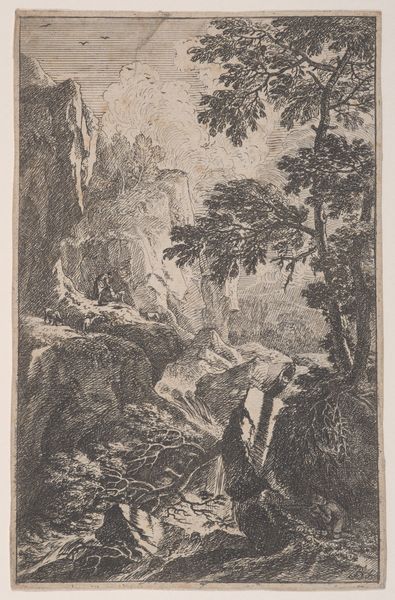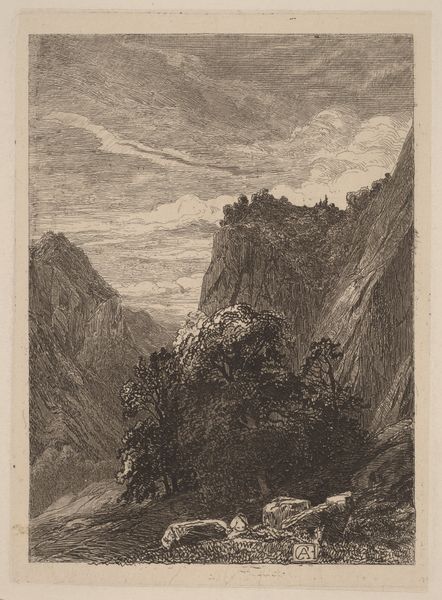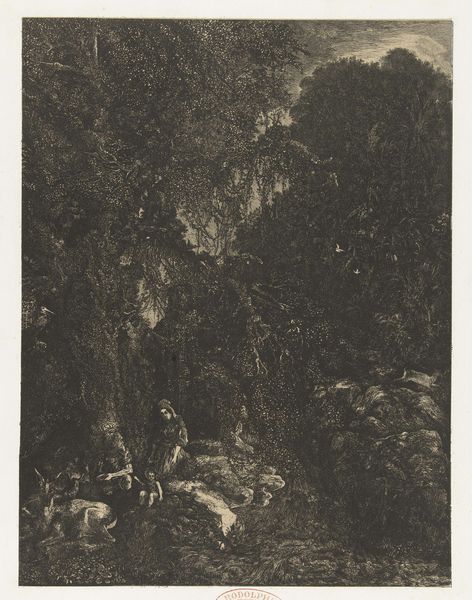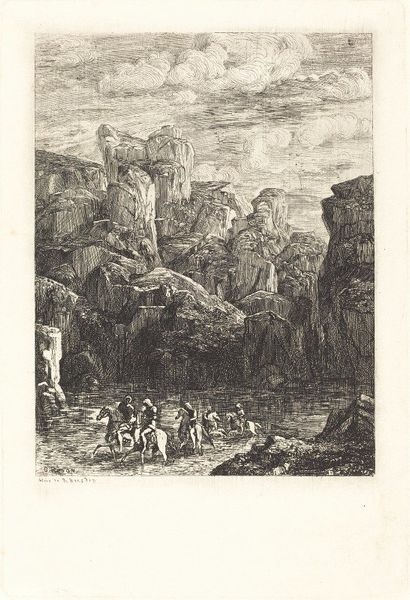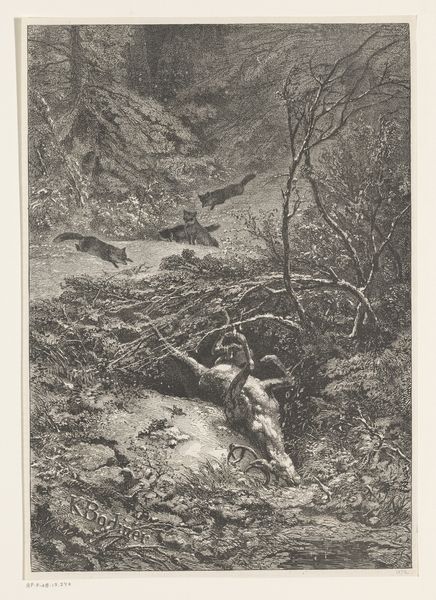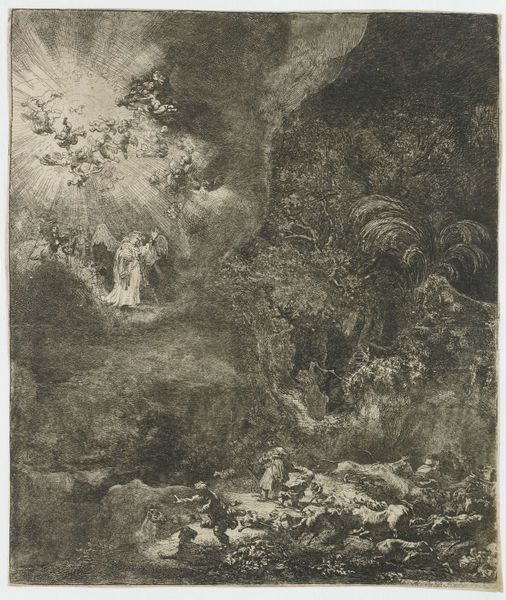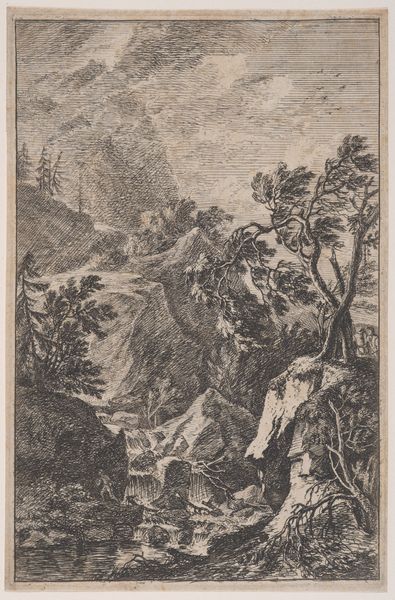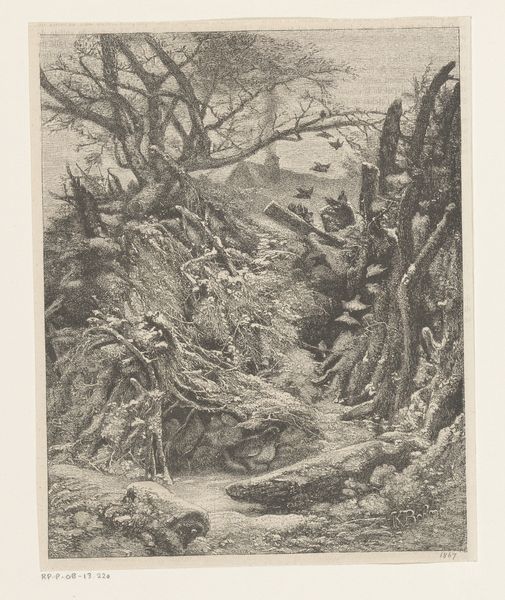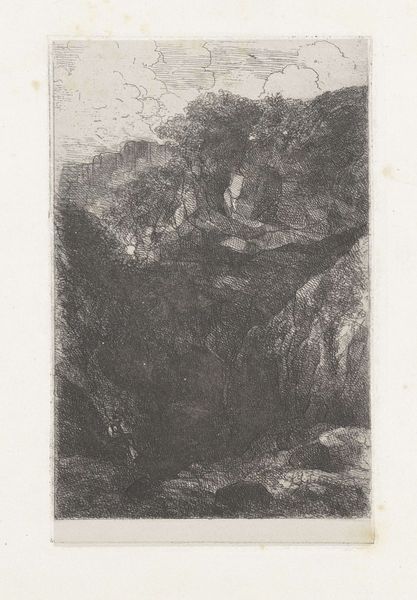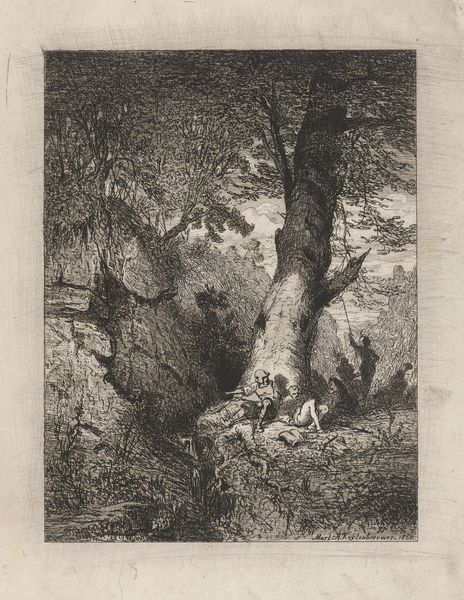
drawing, print, etching
#
drawing
# print
#
etching
#
landscape
#
romanticism
Dimensions: Sheet: 13 13/16 × 11 1/8 in. (35.1 × 28.3 cm) Plate: 7 1/4 × 5 3/8 in. (18.4 × 13.7 cm)
Copyright: Public Domain
Curator: This etching from 1839, titled "Landscape," is the work of Swiss artist Alexandre Calame, and it's currently held at the Metropolitan Museum of Art. Editor: The dramatic lighting immediately grabs you. It has this melancholic feel. All of the detailed, tightly hatched lines giving the work an incredible atmospheric depth, making the mountains feel incredibly distant. Curator: Calame was a pivotal figure in popularizing Alpine landscape painting, catering to the Romantic movement’s taste for the sublime and the awe-inspiring in nature. His work really spoke to the growing national identity forming in Switzerland. This was a time of great change, the growth of tourism, and increased accessibility to the Alps that helped boost that phenomenon. Editor: And he certainly captures that romantic sensibility, framing the wild nature without any inhabitants, yet with distinct attention to structural rendering. Look at the complex shapes of the boulders in contrast with the flow of water, for example, really a feast for the eyes! How do you think his art functioned in the political landscape? Curator: Well, during this era, landscape art played a significant role in shaping national consciousness. Presenting these sublime landscapes inspired pride. Further, consider the context of Switzerland as a neutral space—art became a potent symbol of this detachment, yet also, the resilience and grandeur of the nation. Editor: Yes, and considering how Calame balances the dramatic scenery against the structuralist precision, there is tension there, reflecting Romanticism and elements of the later Realism period. I sense a powerful synthesis between human technique and untamed nature. Curator: Absolutely, it speaks to the Romantic ideal but is also firmly rooted in its time, showcasing the Alps not merely as scenery but as central to a national idea. Calame’s works were strategically acquired by burgeoning museums too. Editor: Thinking about the piece as a whole, I'm struck how he orchestrates all elements towards an undeniable impression, using visual contrast to drive attention upwards to those unreachable, transcendent mountain tops. Curator: It's that dialectic between control and wildness that really captures the ethos of Switzerland, both then and now. The accessibility, through prints like this, helped solidify those feelings in the 19th Century. Editor: The sublime and the structure, a perfectly balanced tension! Curator: Indeed. A testament to the layered impact of landscape art on society.
Comments
No comments
Be the first to comment and join the conversation on the ultimate creative platform.
